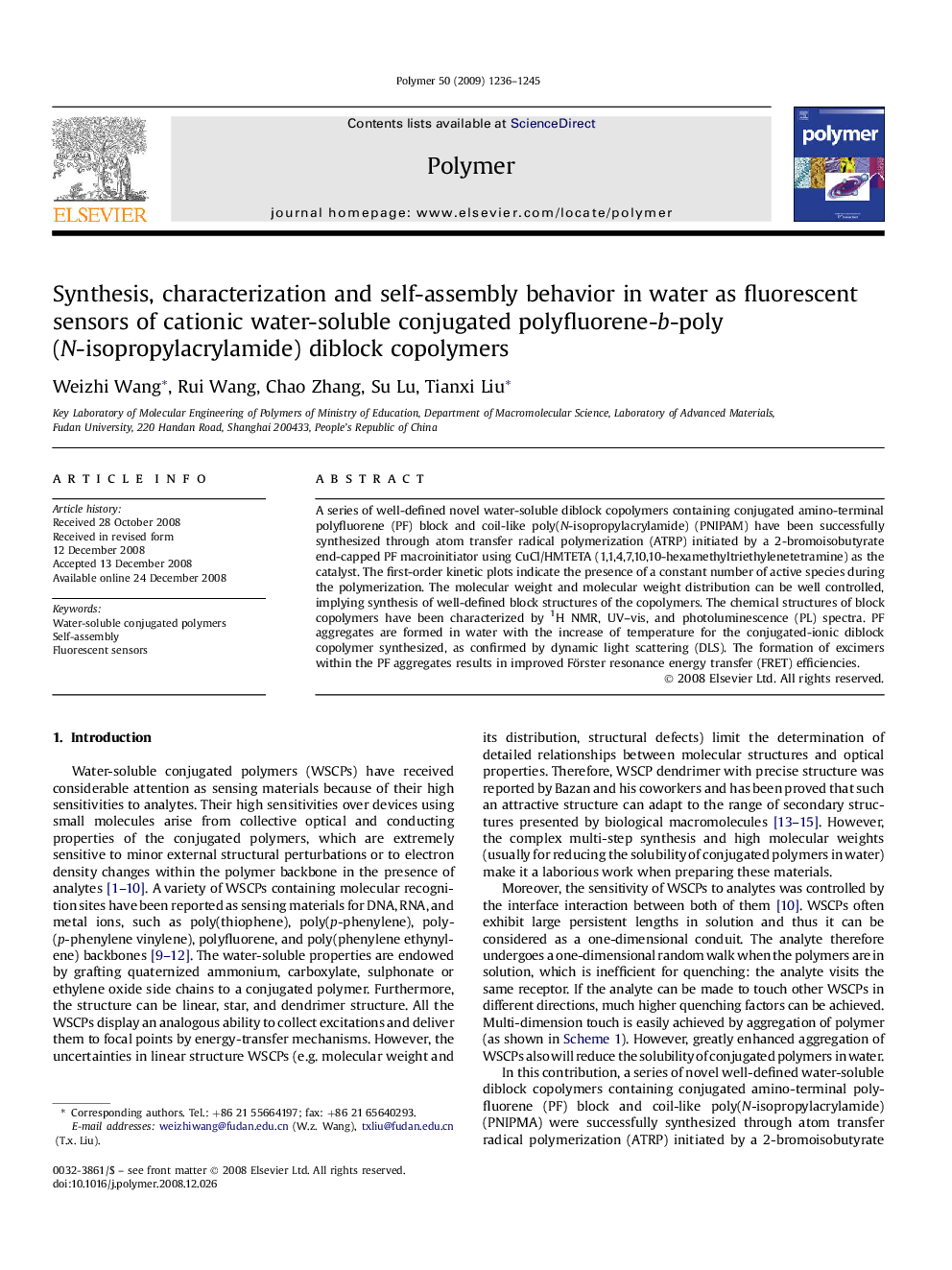| Article ID | Journal | Published Year | Pages | File Type |
|---|---|---|---|---|
| 5184992 | Polymer | 2009 | 10 Pages |
A series of well-defined novel water-soluble diblock copolymers containing conjugated amino-terminal polyfluorene (PF) block and coil-like poly(N-isopropylacrylamide) (PNIPAM) have been successfully synthesized through atom transfer radical polymerization (ATRP) initiated by a 2-bromoisobutyrate end-capped PF macroinitiator using CuCl/HMTETA (1,1,4,7,10,10-hexamethyltriethylenetetramine) as the catalyst. The first-order kinetic plots indicate the presence of a constant number of active species during the polymerization. The molecular weight and molecular weight distribution can be well controlled, implying synthesis of well-defined block structures of the copolymers. The chemical structures of block copolymers have been characterized by 1H NMR, UV-vis, and photoluminescence (PL) spectra. PF aggregates are formed in water with the increase of temperature for the conjugated-ionic diblock copolymer synthesized, as confirmed by dynamic light scattering (DLS). The formation of excimers within the PF aggregates results in improved Förster resonance energy transfer (FRET) efficiencies.
Graphical abstractDownload full-size image
